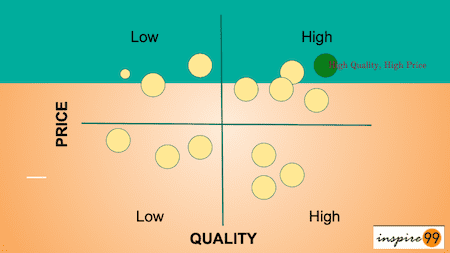Market Segmentation Strategy: In this discussion, we talk about the importance and impact of market segmentation strategy on your overall business. It encompasses value proposition, product pricing and defines your customer interaction as a startup.
Market Segmentation for Product Pricing
Pricing strategies are not very straightforward. They attract confusion and debate as you try to fix your product price for the first time. You need to tread a clear balance between not appearing too cheap or appearing unaffordable.
With that in mind, there are a few steps which can help you get closer to your ideal price and also help you compare yourself with the competitors. There are two practical approaches to arrive at your ideal product price
Cost Based Approach
This approach entails
For
Market Based Approach
In this approach, you perform market research of available solutions, identify prices of different service providers and find a place to pitch your offering. This doesn’t necessarily mean that you offer the same price as your competitor. But, you can use their market intelligence to understand how much your customer is willing to pay and the differentiation you can offer.
This leads to our discussion on Market Segmentation.
Market Segmentation Matrix

The above represents 4 important quadrants to consider your product pricing. In this scenario, both cost and quality are in reference to user perception. Essentially, it is how the user sees your product.
Map all competitors in this matrix
Map out all of your competitors into different sections of the matrix. Remember, this exercise also helps you identify the fringe competitors who are important in your pricing strategy. To complete your matrix, note the following points:
- Green represents your solution whereas the others in yellow represent your competition
- Map all your competitors in this matrix, including your fringe competitors. It provides you a good overview of the market
- Keep the pricing and quality as accurate as possible, these should be user perceived price and quality, not your own
Matrix 1: High-Quality High-Price

This is a very good market segment to be in. If most of your competitors are in this pricing segment, you don’t really have to skim on your price. Remember, it is not what you perceive about the quality of your product but the customer. This pricing has to be made with your customer in mind. Points to note if you are in this segment:
- Ensure that you define a good value proposition for your product. You need to start thinking about the differentiation you can achieve and stay ahead of the curve.
- If it is crowded with a lot of competitors, it is not very easy just to define yourself in this segment. You might have to start thinking of some discounts and rely lesser on economies of scale for this product.
Matrix 2: High-Quality Low-Price

This is a decent market segmentation to be in. If you have a good product and are interested in the mass market, it is the segment for you. Try to map yourself as accurately as possible. This will help you identify the price and perceived quality of your competitors. Points to note if you are in this pricing segment
- Be prepared to scale up based on demand. You can make your profits only by selling a large number of services/products to make your profits. You need to think about overheads this brings and how you can work around them.
- Note that it is very hard to move from low price to high price segment. You will need to explain the value proposition to your customer. There is little leeway when you think of increasing prices. Think why you cannot be in the high price high quality segment before deciding on this one.
Matrix 3: Low-Quality, Low-Price

If you are not too worried about your brand being considered as cheap, this is perhaps the right segment for you. This is not always the best strategy to follow in terms of
- You are in for a quick win and don’t care about long term effects
- If you are in a temporary market where people don’t care about quality, then it might work out very well for you.
Matrix 4: Low-Quality High Price

This is probably the worst place for you to be in a business. If your product offering isn’t worth much, but yet it is priced very high, then you are typically shooting yourself in the foot. Our recommendation is to stay clear from this segment and try to stay in the first two segments.
Summary: Market Segmentation for Product Pricing
With the above 4 quadrants, be careful about your strategy and let that define your pricing. Along with setting yourself up in one of these matrices, it is useful to remember the following points
- It is important to look back at your costs before you come up with a price just based on the market. There needs to be a balance between these two to earmark a price for your offering.
- Remember to spend adequate time on market research. Look at even your fringe competitors and fit them in the matrices
With this in mind, you are in a good place to start your product pricing. Join our discussion by leaving your comments/questions below.

Pingback: Price is what you pay Value is what you get - Warren Buffet -
Pingback: 6 Key steps to Startup Branding strategy - Inspire99
Pingback: 4 Practical Tips - Pricing Strategy for Startup - Inspire99